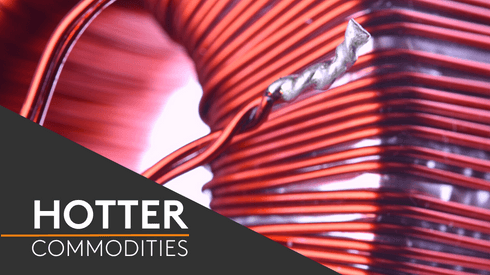But if the LME “should have been better prepared to address the serious risks posed by extreme volatility,” as the FCA said earlier on Thursday March 20, then shouldn’t the regulators, who had the full picture of events, not have picked up on the situation ahead of time too?
Those regulators include the FCA, Prudential Regulation Authority and Bank of England, which collectively have scrutiny over not just the systems, structures and governance of the LME, but also of the banks and other financial institutions participating in the nickel market.
Critically, that includes visibility of the over-the-counter (OTC) positions being amassed – largely by banks – at the time on behalf of participants including Chinese nickel and stainless producer Tsingshan Holding Group.
The LME has for many years been asking its members for greater oversight of the OTC market, where trades take place directly between two parties without the supervision of the exchange.
Its request was always batted away by the majority of market participants, who argued that introducing OTC reporting rules would be complex and costly, and that the LME had no business asking for information outside its exchange-traded remit anyway.
The result was a train wreck waiting to happen: extreme market volatility, suspension and cancellation of trades, legal action and a period in which market participants backed away from the nickel contract due to a lack of confidence.
A short nickel position in the OTC market may not initially sound particularly threatening to the fabric of large banks, but given it was over $4 billion in size and the broader repercussions of default to the LME ecosystem are evident, that viewpoint starts to change a little. Red flags should have risen among regulators and questions over financial stability should have been asked.
It’s also still unclear why any banks with insight into the amassing Tsingshan position did not report it to the LME sooner, and what the maximum size they would allow any long or short OTC position held by the Chinese client to be.
That’s an especially important point, particularly given that Tsingshan’s production was neither deliverable against LME contract specifications nor commensurate with the size of the nickel market. Arguments that the material could be swappable were somewhat moot as a result, too.
As the FCA acknowledged repeatedly in its ruling, the LME “could not see certain positions in the OTC market that it later found were a material cause of the prices rises.”
“The LME had no way of knowing whether an upward price spiral would continue when the market re-opened,” it added.
It reiterated this conclusion throughout its ruling, stating that because the OTC trades “took place outside the LME’s market, the LME did not have visibility of these positions at the time. This interaction between off-market OTC trades and the LME market was the largest driver of price volatility between March 4 and 8, 2022.”
The LME is clearly not faultless: it needed better controls and policies, and its team in Asia weren’t experienced enough to spot the market becoming dangerously disorderly as the situation escalated on March 8, 2022.
But the exchange has since moved to tighten its controls and increase transparency in the OTC market – and volumes have picked up accordingly.
There is currently no indication that any activity in the OTC or on-exchange market was improper or broke rules. But if there had been greater OTC visibility at the LME, and the regulators hadn’t seemed to be sleeping, the situation could have been very different.
In Hotter Commodities, special correspondent Andrea Hotter covers some of the biggest stories impacting the natural resources sector. Read more coverage on our dedicated Hotter Commodities page here.






